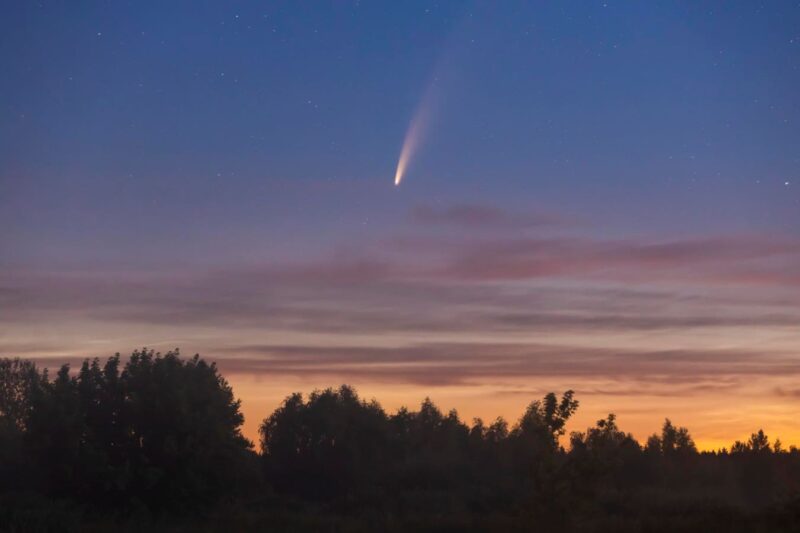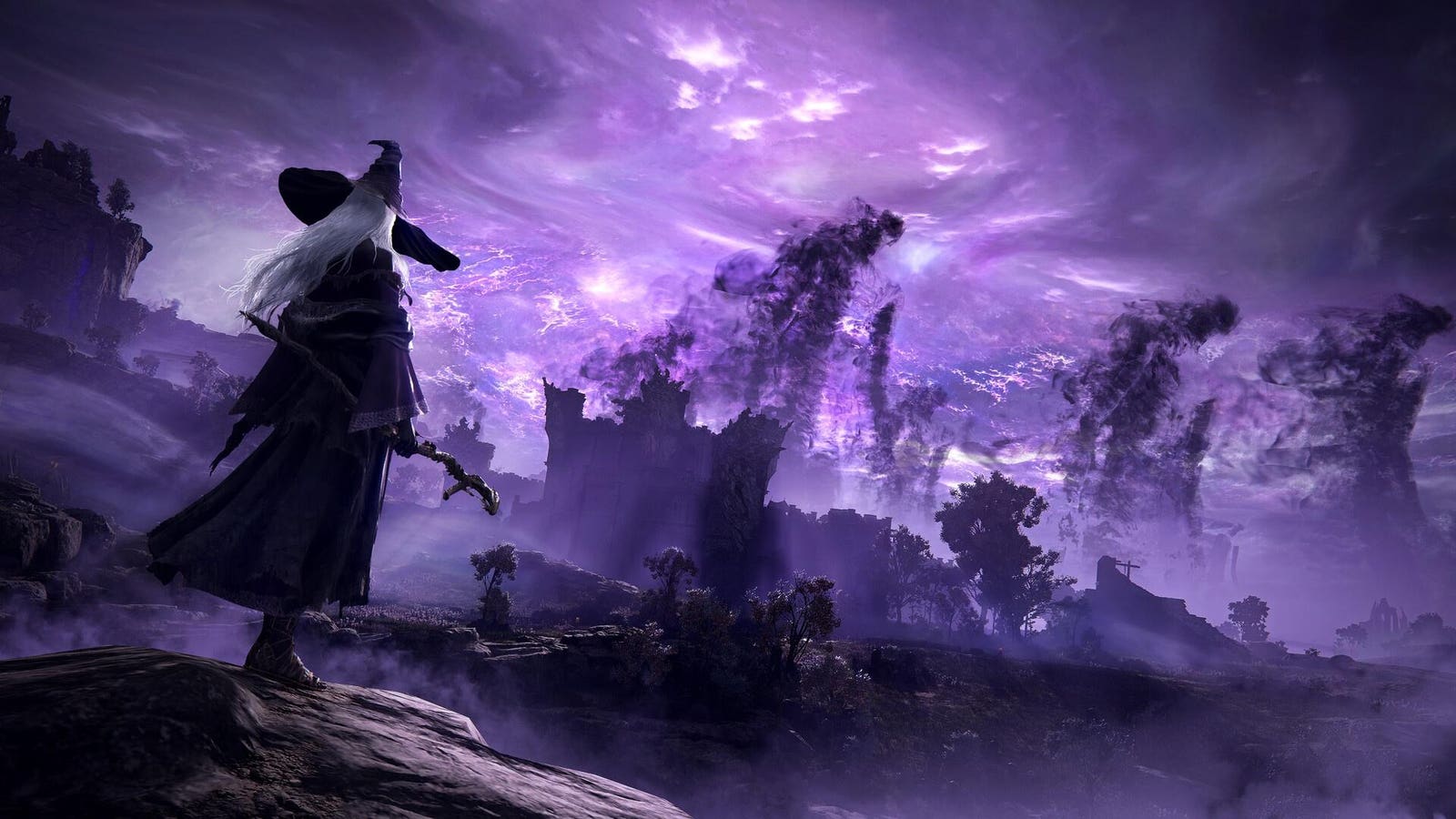Comet Neowise C/2020 F3.
getty
October’s night skies bring a change from summer to winter constellations, with Orion and Taurus rising as the Summer Triangle sinks. This year features a bright full harvest moon, two meteor showers, and perhaps a chance to catch a couple of comets with the naked eye.
Here’s everything you need to know about the night sky, stargazing and astronomy in October 2025.
1. A Full ‘Harvest Moon’
When: dusk on Oct. 6 and Oct. 7
Where: eastern horizon
The full moon closest to the September equinox is always called the harvest moon, and in 2025, that honor belongs to October’s full moon. On Oct. 6, it rises just after sunset, glowing pale orange as it clears the horizon. On Oct. 7, it returns a little later into a darker sky, shining even brighter.
2. Draconid Meteor Shower
When: after dark on Oct. 8
Where: northern sky
The Draconids are a modest shower, producing about 10 meteors per hour. However, unlike most showers, they’re visible right after dusk, radiating from the constellation Draco near the North Star. Keep expectations low, but the Draconids have been known to produce dramatic outbursts.
Thursday, Oct. 9: Moon Meets the Pleiades
Stellarium
3. Moon Transits The Pleiades
When: a few hours after sunset/all night on Oct. 9
Where: southern sky
The waning gibbous moon passes within a degree of the Pleiades star cluster in Taurus in a rare treat. Binoculars will best reveal the delicate blue-white stars sparkling behind the moon’s glare. The moon will drift across the cluster over several hours, so keep watching.
4. ‘Fireball’ Meteor Showers Begin
When: after dark from Oct. 13
Where: eastern horizon
Two long-lasting meteor showers, the Southern and Northern Taurids, begin in mid-October. Both produce only a handful of meteors per hour, but they’re famous for their bright fireballs. Expect slow, brilliant meteors streaking from Taurus for the rest of the month — a nice bonus if you’re out stargazing.
Meteors streak across the sky over a desert during the Orionid meteor shower on October 22, 2023 in Yuli County, Bayingolin Mongol Autonomous Prefecture, Xinjiang Uygur Autonomous Region of China. (Photo by VCG/VCG via Getty Images)
VCG via Getty Images
5. Peak Of The Orionid Meteor Shower
When: around midnight, Oct. 21-22
Where: southeast sky
The Orionids are one of the year’s most reliable showers, producing about 20 meteors per hour. This year, the peak occurs under a new moon, meaning dark skies that are ideal for “shooting stars.” Meteors will radiate from Orion’s club above Betelgeuse, but can appear anywhere overhead. They’re dust and debris from Halley’s Comet, which also causes the Eta Aquariids each May.
6. Orion’s Belt Rises
When: just before midnight in October
Where: eastern horizon
Three bright stars — Mintaka, Alnilam and Alnitak — climb vertically into the sky, marking the unmistakable shape of Orion’s Belt. To their upper left glows red Betelgeuse, and to the lower right shines blue Rigel. This marks the seasonal return of Orion, one of the most recognizable constellations of winter.
Orion and the winter stars and constellations rising over the moonlit badlands of Dinosaur Provincial Park, Alberta, on November 27, 2017. (Photo by: Alan Dyer/VW Pics/UIG via Getty Images)
Universal Images Group via Getty Images
7. Naked-Eye Comets
When: after dark, Oct. 21
Where: northern and western sky
Comet Lemmon (also called C/2025 A6) and Comet C/2025 R2 (SWAN) makes their closest approaches to Earth tonight, so may be visible — possibly to the naked eye, but almost certainly through binoculars — in the northern and sky western sky after dark, respectively.
The times and dates given apply to mid-northern latitudes. For the most accurate location-specific information, consult online planetariums like Stellarium.
Wishing you clear skies and wide eyes.









